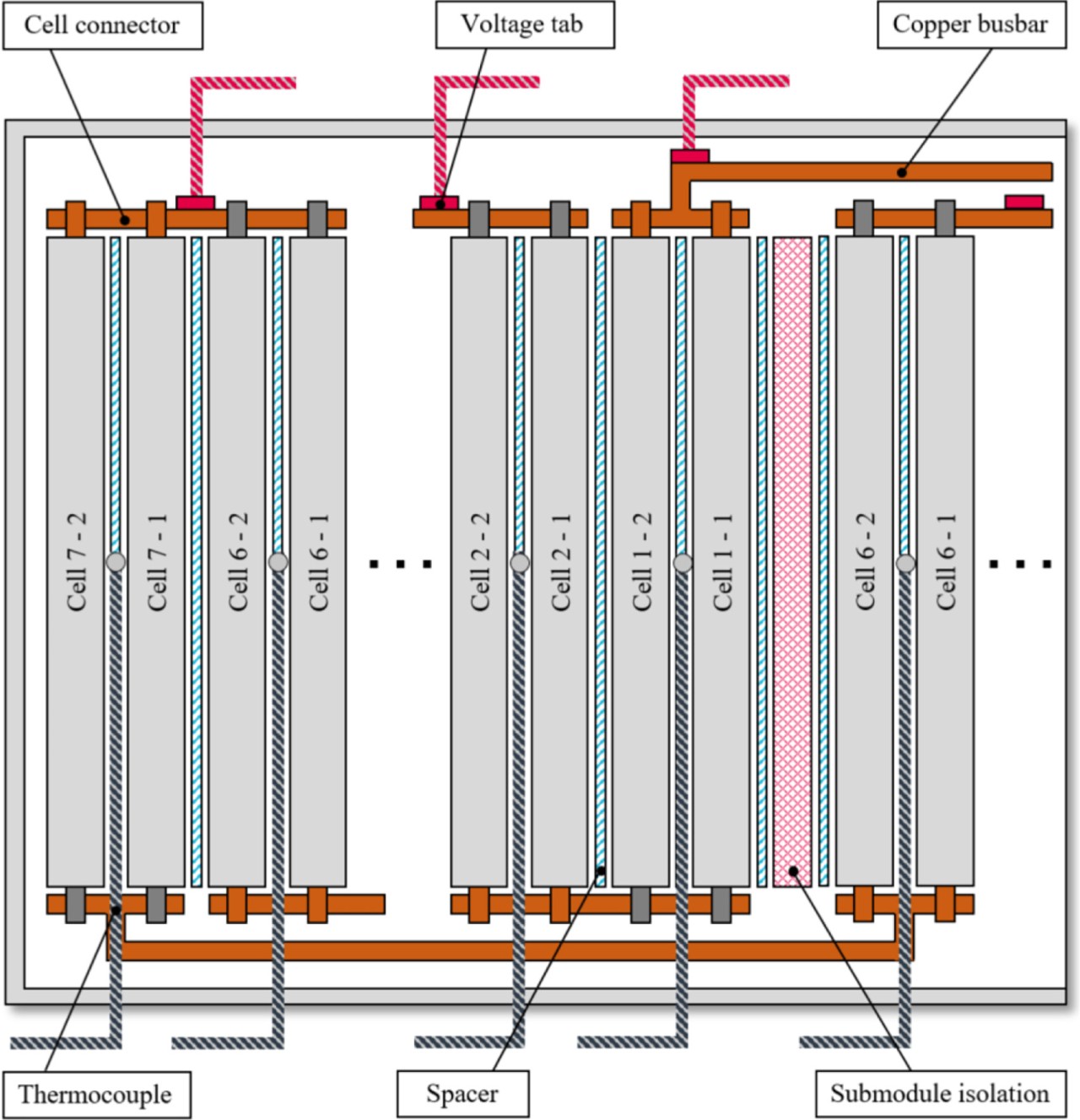
Electrical cell-to-cell variations within large-scale battery systems
Following the ongoing trend towards electrification in the personal transport sector, lithium-ion-based battery systems have also become increasingly relevant in stationary and marine applications in recent years. In order to ensure optimal design and operation as well as availability and safety for these investment-intensive assets, so-called digital twins running in parallel to the physical system have drawn the attention of researchers and industry alike.
Digital twins for large-scale and investment-intensive Li-ion battery systems in marine and stationary applications have drawn increasing interest in recent years. Considering electrical cell-to-cell variations (CtCVs) within the underlying battery model of such a digital twin promises various advantages in the fields of model-based optimization and predictive maintenance. However, the existing approaches for both the characterization and modeling of CtCVs are unsuited for large-scale systems consisting of thousands of individual cells.
In this context, this paper introduces a holistic tool chain comprising three main elements: First, a non-destructive method for the in-situ determination of resistance and capacity distributions within a battery system is presented. The method was evaluated on a commercial battery module for stationary applications consisting of 64 Ah pouch cells in 14s2p configuration. In the second step, the obtained distributions were used to parameterize a state-of-the-art multi-cell battery model, which allows the calculation of the voltage distribution within the system. The validation showed that the resulting model is able to calculate the voltage spread with a mean average error of 1.1 mV for a 24 h load profile.
In the third step, multivariate statistical analysis was used on the obtained parameters in order to simplify the original model and thereby reducing its computational demands. The simplification approach allows the calculation of envelope voltages curves within which a random cell can be found with a given probability. In comparison to the original model, the simplified model was able to represent the voltage extrema while reducing the computation time by a factor of 27. This renders the simplified model applicable for live digital twin applications for large-scale battery systems.
Read more details in the published article.